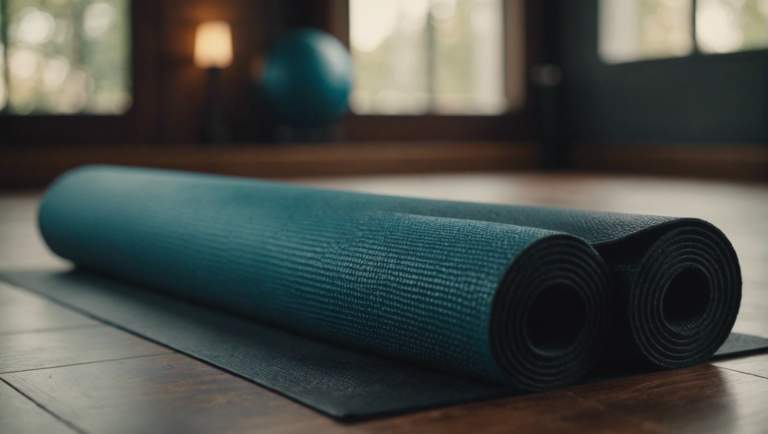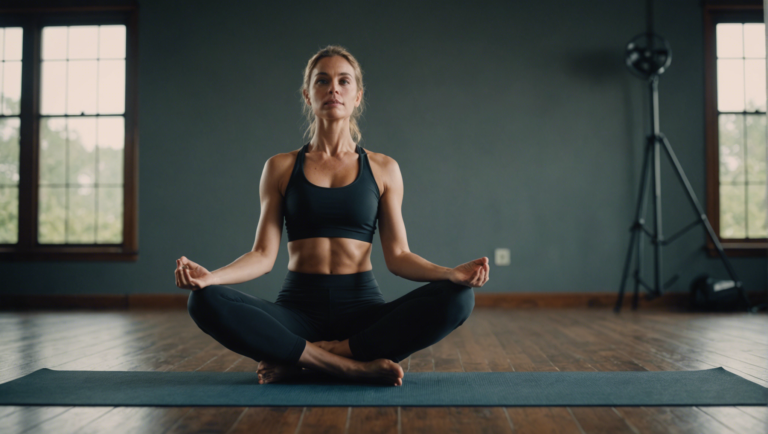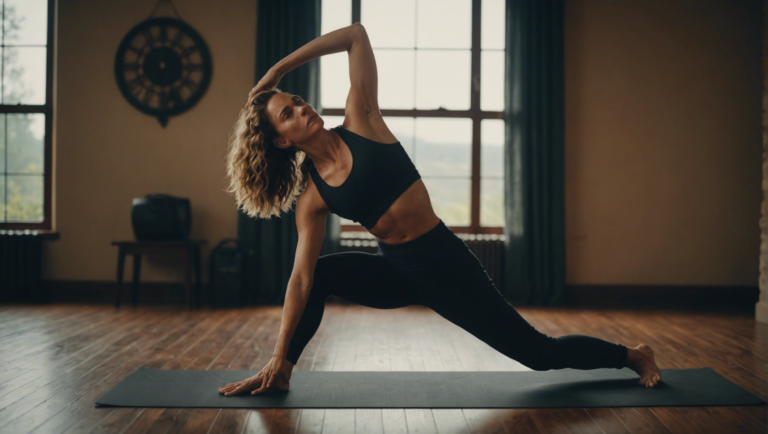Guidelines For Practicing Yoga With Toddlers Safely And Effectively
Importance of Bonding Through Yoga Practice with Toddlers
Bonding with your toddler is an essential aspect of their growth and development. yoga into your routine can be a wonderful way to strengthen your bond while reaping the numerous benefits that yoga offers for both you and your child. Here are some guidelines for practicing yoga with toddlers safely and effectively.
Benefits of Yoga Practice for Toddlers
Yoga offers a wide range of physical, mental, and emotional benefits for toddlers. For children, yoga can improve flexibility, balance, and coordination. It also helps in developing focus, concentration, and body awareness. Additionally, practicing yoga can help toddlers release pent-up energy, reduce stress, and promote better sleep patterns.
Establishing a Safe Environment
When practicing yoga with toddlers, it is crucial to create a safe and child-friendly environment. Clear a clutter-free space with a non-slip mat where you can practice together. Ensure that the room is at a comfortable temperature and free from any hazards. Consider playing soft music or incorporating fun props to make the experience enjoyable for your child.
Choosing Appropriate Poses
Selecting age-appropriate yoga poses is key to ensuring a safe and effective practice with your toddler. Opt for poses that are simple, engaging, and easy for your child to imitate. Animal-themed poses like Cat-Cow, Downward Dog, Butterfly, and Tree Pose can capture your toddler’s interest and imagination. Encourage your child to mimic the poses while adding elements of playfulness and creativity.
Practicing Mindfulness and Patience
Yoga provides an excellent opportunity to teach toddlers mindfulness and self-regulation skills. Encourage your child to focus on their breath and body sensations during the practice. Be patient and understanding, allowing your toddler to explore the poses at their own pace. Use positive reinforcement and gentle guidance to keep the practice light-hearted and joyful.
Engaging in Partner Poses
Partner poses can enhance the bonding experience between you and your toddler during yoga practice. Poses like Partner Boat, Partner Forward Fold, and Partner Tree Pose allow you to connect with your child physically and emotionally. Partner poses encourage communication, trust, and cooperation, fostering a sense of closeness and unity between you and your little one.
Closing with Relaxation
After an active yoga session, it is essential to wind down with a relaxation practice. Guided imagery, gentle massage, or storytelling can help your toddler transition from the practice to a state of calm and relaxation. Ending the session on a soothing note can leave a lasting positive impression on your child and reinforce the bond you have cultivated through yoga.
Practicing yoga with your toddler can be a fulfilling and enriching experience for both of you. By following these guidelines and approaching the practice with patience, creativity, and love, you can create a nurturing environment where you and your child can bond, grow, and thrive together through the practice of yoga.
Child-Friendly Yoga Poses and Activities for Toddlers
Yoga can be a wonderful activity for both parents and toddlers to engage in together. It offers numerous benefits such as improved flexibility, strength, and overall well-being. However, practicing yoga with toddlers requires specific guidelines to ensure their safety and effectiveness in participating. Here are some child-friendly yoga poses and activities tailored specifically for toddlers.
Importance of Child-Friendly Yoga
When introducing toddlers to yoga, it’s essential to make the experience fun and engaging for them. Child-friendly yoga helps improve their coordination, balance, and concentration while also promoting relaxation and stress relief. Through interactive poses and activities, toddlers can develop body awareness and mindfulness at a young age.
Establishing a Safe Environment
Before starting any yoga session with toddlers, it’s crucial to create a safe environment. Clear out any obstacles in the space, use non-slip mats, and ensure adequate supervision at all times. Toddlers are naturally curious and may not fully understand the boundaries of a yoga practice, so safety should always be a top priority.
Simple Yoga Poses for Toddlers
-
Tree Pose (Vrikshasana) – Encourage toddlers to stand tall, like a tree, with their arms reaching up high. This pose helps improve balance and focus.
-
Butterfly Pose (Baddha Konasana) – Have toddlers sit down with the soles of their feet together and gently flap their legs like butterfly wings. This pose can help open up the hips and improve flexibility.
-
Cobra Pose (Bhujangasana) – Ask toddlers to lie on their bellies, place their hands under their shoulders, and lift their chest off the ground. Cobra pose helps strengthen the back muscles.
Engaging Yoga Activities
-
Animal Yoga – Incorporate animal-themed poses such as Cat-Cow, Downward Dog, and Snake Pose. Encourage toddlers to mimic the movements and sounds of various animals for a playful yoga session.
-
Yoga Storytelling – Create a story using yoga poses as characters or actions. This activity not only sparks imagination but also helps toddlers remember the poses in a fun way.
-
Sing-Along Yoga – Integrate nursery rhymes or simple yoga songs into the practice. Singing while doing yoga poses adds an element of joy and rhythm to the session.
Mindfulness and Breathing Exercises
Teaching toddlers simple breathing exercises can help them relax and stay focused during yoga practice. Encourage them to take deep breaths in and out, emphasizing the importance of connecting breath with movement.
Practicing yoga with toddlers can be a rewarding experience for both parents and children. By following child-friendly yoga poses and activities, toddlers can enjoy the benefits of yoga in a safe and effective manner. Remember to keep the sessions light-hearted, engaging, and age-appropriate to foster a love for yoga from a young age.
Safety Tips to Consider When Doing Yoga with Toddlers
Yoga is a wonderful practice that offers numerous benefits for both adults and children. When it comes to introducing toddlers to yoga, safety is paramount. It is essential to follow specific guidelines to ensure that practicing yoga with toddlers is not only effective but also safe and enjoyable for both the child and the adult involved.
Importance of Safety in Practicing Yoga with Toddlers
When engaging in yoga with toddlers, safety should be the top priority. Toddlers are curious, energetic, and constantly exploring their environment. Therefore, practicing yoga with them requires extra caution and attention to ensure their well-being throughout the session.
Setting the Right Environment
Creating a safe environment is crucial when practicing yoga with toddlers. Choose a clean, quiet, and clutter-free space where you can move freely without any hazards. Ensure that the area is spacious enough to accommodate both you and your toddler comfortably.
Selecting Appropriate Poses
When practicing yoga with toddlers, it is essential to choose poses that are safe and suitable for their young bodies. Avoid complex poses that may strain their muscles or joints. Opt for simple and gentle poses that promote flexibility, balance, and relaxation.
Supervision and Interaction
Constant supervision is key when practicing yoga with toddlers. Stay close to your child at all times to prevent any accidents or injuries. Make the session interactive and engaging by incorporating songs, stories, and playful movements to keep your toddler interested and focused.
Respecting Their Limits
Toddlers have different abilities and limitations compared to adults. Respect your child’s boundaries and avoid pushing them beyond their comfort zone. Encourage them to participate at their own pace and celebrate their efforts, no matter how small.
Using Props Safely
Props can enhance the yoga experience for toddlers, providing support and stability during poses. However, it is essential to use props safely and appropriately. Choose props that are suitable for your child’s age and size, and always supervise their use to avoid any accidents.
Practicing Mindfulness
Incorporate mindfulness techniques into your yoga practice with toddlers. Encourage them to focus on their breathing, body sensations, and emotions during the session. Mindfulness can help enhance their emotional regulation, attention span, and overall well-being.
Practicing yoga with toddlers can be a rewarding experience for both the child and the adult. By following these safety guidelines and approaching the practice with patience and creativity, you can create a nurturing environment where your toddler can explore movement, mindfulness, and relaxation in a safe and effective manner. Remember to prioritize safety, respect your child’s limits, and make the practice enjoyable for a truly enriching yoga experience with your little one.
Benefits of Introducing Mindfulness to Toddlers through Yoga
In today’s fast-paced world, teaching mindfulness to toddlers has become increasingly important. Mindfulness, the practice of being present in the moment without judgment, can have numerous benefits for young children. One effective way to introduce mindfulness to toddlers is through the practice of yoga. Yoga, with its focus on breathing and gentle movements, can help toddlers develop mindfulness skills in a fun and engaging way.
Developing Mind-Body Connection
Introducing toddlers to yoga at a young age can help them develop a strong mind-body connection. Through simple yoga poses and breathing exercises, toddlers learn to pay attention to their bodies and their breath. This awareness can help them regulate their emotions and respond to stress in a healthy way. By practicing yoga regularly, toddlers can develop body awareness and learn to listen to their bodies, which can benefit them as they grow older.
Improving Concentration and Focus
Yoga can also help toddlers improve their concentration and focus. In today’s digital age, where distractions are abundant, teaching toddlers how to focus on the present moment is crucial. Through yoga, toddlers can practice focusing on their breath or a specific pose, which can translate into improved concentration in other areas of their lives. This enhanced ability to focus can benefit toddlers in school and in their everyday activities.
Encouraging Physical Activity
Introducing toddlers to yoga is a great way to encourage physical activity in a gentle and non-competitive environment. Yoga poses help improve flexibility, strength, and coordination in young children. Additionally, yoga can help toddlers develop better balance and posture. Regular physical activity through yoga can contribute to the overall health and well-being of toddlers, laying the foundation for a healthy lifestyle as they grow up.
Teaching Emotional Regulation
Yoga can be a valuable tool for teaching toddlers how to regulate their emotions. The practice of mindfulness in yoga encourages toddlers to observe their thoughts and feelings without judgment. By learning to stay present and calm during challenging poses or situations, toddlers can develop emotional resilience. These skills can help toddlers manage stress, anxiety, and frustration more effectively, leading to better emotional well-being.
Fostering Bonding and Connection
Practicing yoga together with toddlers can strengthen the bond between caregivers and children. Yoga sessions provide an opportunity for quality time spent together in a positive and nurturing environment. Engaging in yoga poses, breathing exercises, and relaxation techniques with toddlers can create a sense of connection and closeness. This shared experience can enhance communication, trust, and understanding between caregivers and toddlers.
Introducing toddlers to yoga as a way to teach mindfulness can have a wide range of benefits. From developing a mind-body connection to improving concentration, encouraging physical activity, teaching emotional regulation, and fostering bonding, yoga is a valuable practice for toddlers. By incorporating mindfulness through yoga into their routines, caregivers can help toddlers cultivate important life skills that will benefit them as they navigate the world around them.
Strategies to Keep Toddlers Engaged and Interested During Yoga Sessions
Yoga sessions can be a wonderful way for toddlers to engage in physical activity, improve flexibility, and cultivate a sense of calmness and well-being. However, keeping toddlers engaged and interested during these sessions can sometimes be a challenge. Here are some strategies to help you make practicing yoga with toddlers a fun and rewarding experience.
Incorporate Fun and Playful Elements into the Yoga Poses
One effective strategy to keep toddlers engaged during yoga sessions is to incorporate fun and playful elements into the yoga poses. For example, you can encourage toddlers to imitate animals like cats, dogs, or frogs as they move through different poses. Making animal sounds or incorporating storytelling into the poses can help capture their attention and make the practice more enjoyable for them.
Use Props and Visual Aids to Enhance Engagement
Another way to keep toddlers interested during yoga sessions is to use props and visual aids to enhance their engagement. Simple props like colorful scarves, soft toys, or picture cards can be used to make the poses more interactive and visually appealing for toddlers. You can also play soft music or use visual cues like posters or videos to guide them through the poses.
Keep Sessions Short and Varied to Maintain Interest
Toddlers have short attention spans, so it’s important to keep yoga sessions short and varied to maintain their interest. Instead of long, uninterrupted sessions, consider breaking up the practice into shorter segments with brief rest breaks in between. Introducing new poses, movements, or games throughout the session can also help prevent boredom and keep toddlers engaged.
Encourage Exploration and Creativity in Their Movements
Encouraging toddlers to explore and be creative with their movements during yoga can help them stay engaged and interested. Allow them to experiment with different ways of moving their bodies within the poses, such as adding gentle twists, arm movements, or leg lifts. Giving them the freedom to express themselves through movement can make the practice more enjoyable and meaningful for them.
Offer Positive Reinforcement and Encouragement
Positive reinforcement and encouragement are key to keeping toddlers engaged and motivated during yoga sessions. Praise their efforts, no matter how small, and celebrate their achievements to boost their confidence and self-esteem. Offering words of encouragement and gentle guidance can help create a positive and supportive environment that encourages their active participation in the practice.
Practicing yoga with toddlers can be a fulfilling and enriching experience for both children and parents. By incorporating fun and playful elements, using props and visual aids, keeping sessions short and varied, encouraging exploration and creativity, and offering positive reinforcement, you can help keep toddlers engaged and interested during yoga sessions. Remember to approach the practice with patience, flexibility, and a sense of fun to create a rewarding yoga experience for toddlers.
Conclusion
In incorporating mindfulness into yoga sessions with toddlers, parents can cultivate emotional intelligence and promote self-regulation in their little ones. By introducing mindfulness practices such as deep breathing and simple meditative techniques, toddlers can learn to manage their emotions and develop a sense of calmness. Additionally, mindfulness can enhance their focus and attention span, which can be beneficial for their overall well-being and cognitive development.
To keep toddlers engaged and interested during yoga sessions, it is essential to make the practice fun and interactive. storytelling, music, and creative props can capture their attention and make the experience enjoyable. Furthermore, allowing toddlers to express themselves and explore different movements can foster their creativity and imagination. By creating a playful and stimulating environment, parents can ensure that their toddlers look forward to their yoga sessions and reap the countless benefits of this practice.
Practicing yoga with toddlers is not only a great way to bond with them but also an opportunity to introduce them to a lifelong practice that promotes physical, mental, and emotional well-being. By engaging in child-friendly yoga poses and activities, parents can support their toddlers’ physical development, coordination, and flexibility. Moreover, integrating mindfulness into yoga sessions can help toddlers cultivate emotional resilience, focus, and self-regulation from a young age.
Safety should always be a top priority when practicing yoga with toddlers, emphasizing the importance of being aware of their limitations and capabilities. By following safety guidelines and listening to their cues, parents can create a secure and nurturing environment for their toddlers to explore and enjoy yoga. By adopting these strategies and being mindful of their child’s needs, parents can make yoga sessions a harmonious and enriching experience for both themselves and their toddlers.


